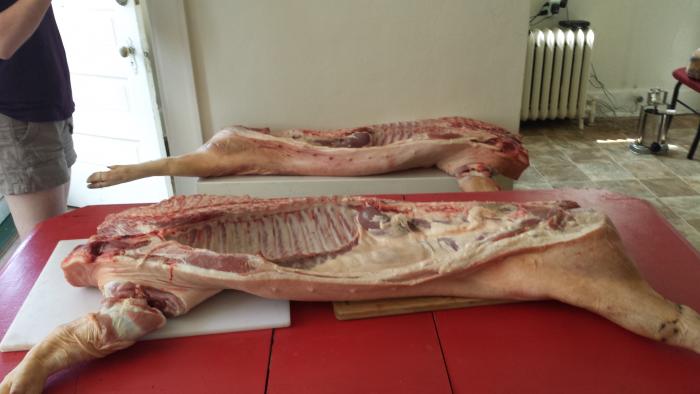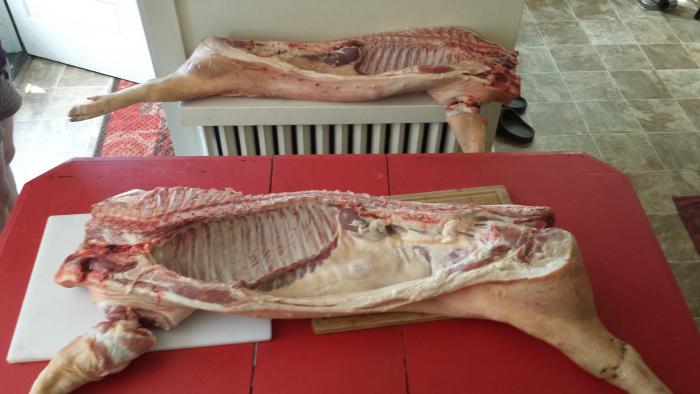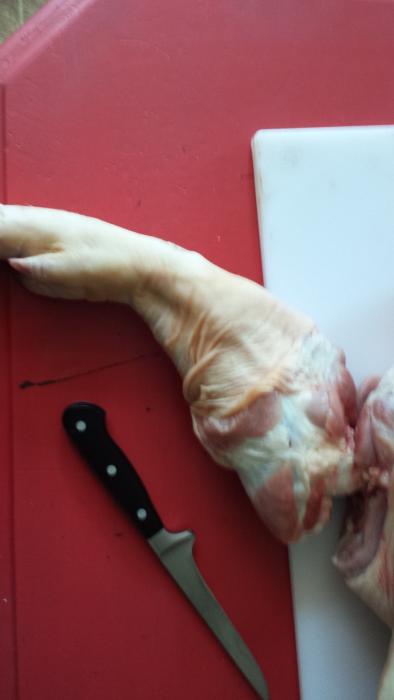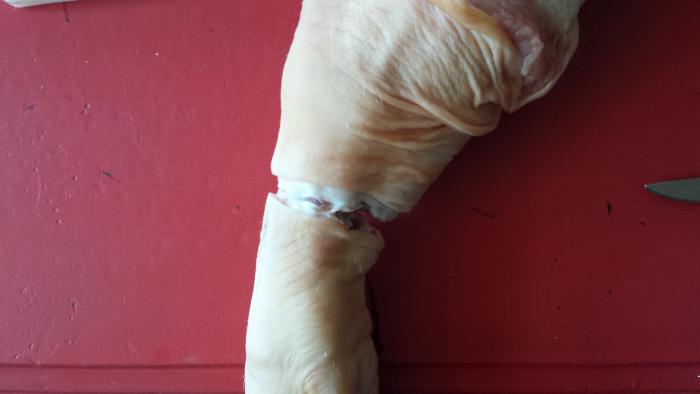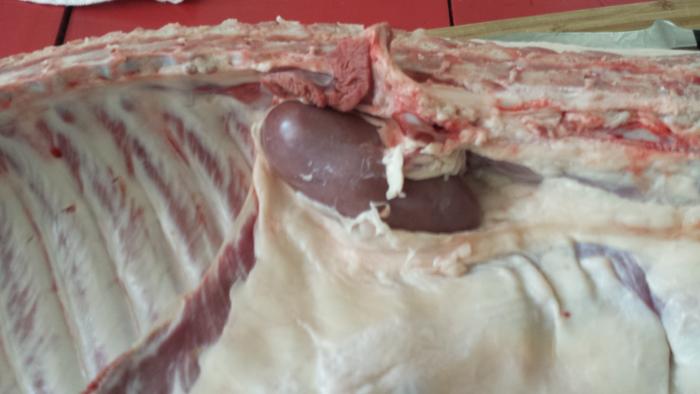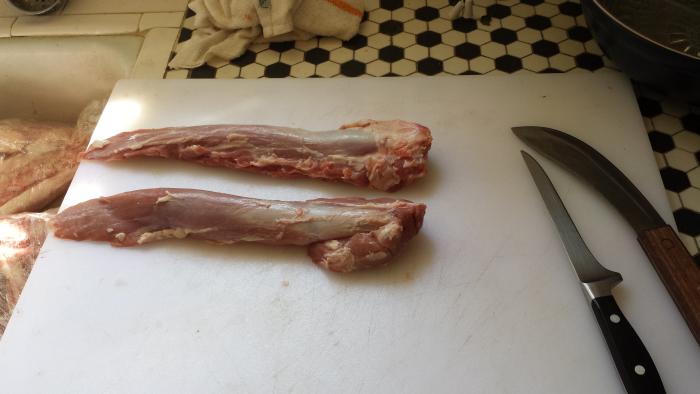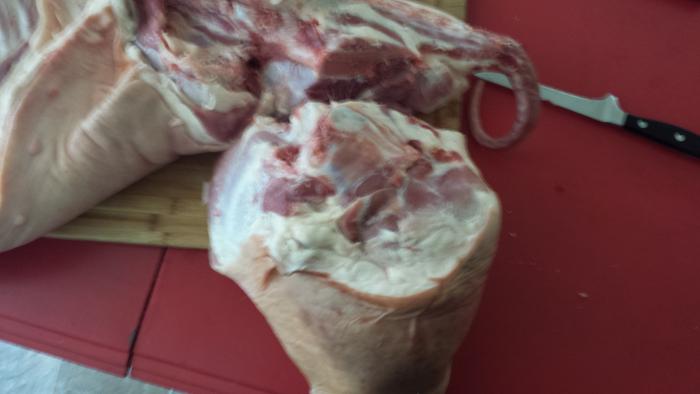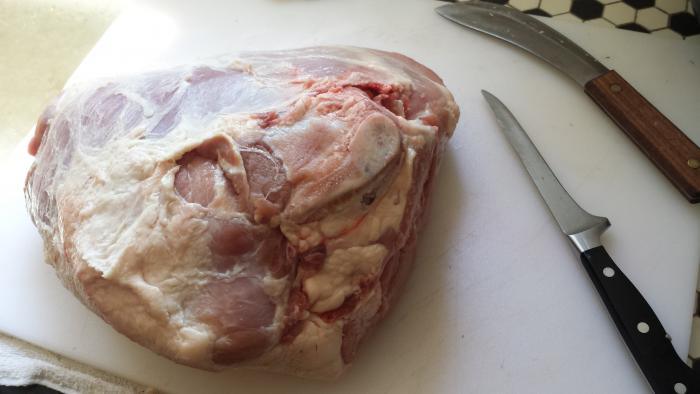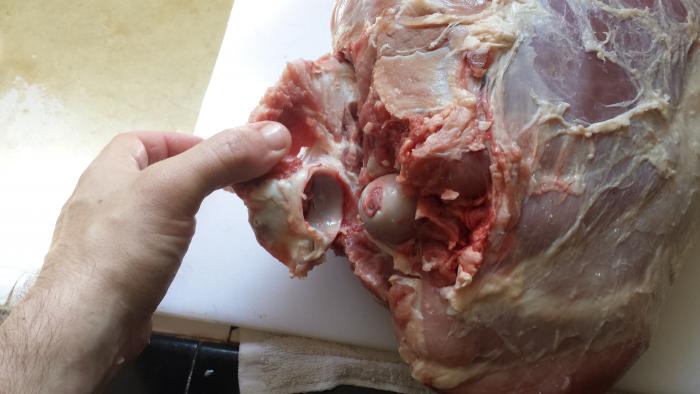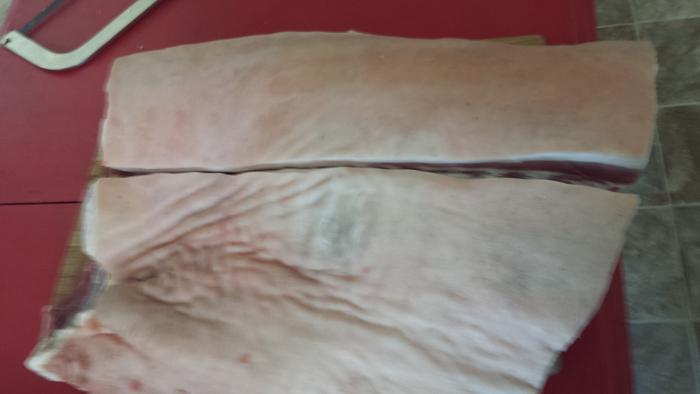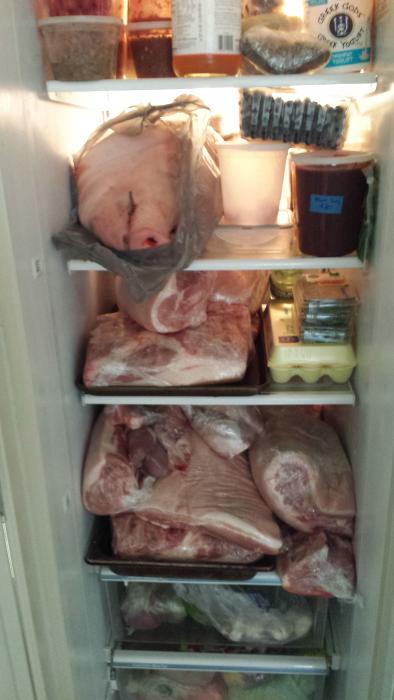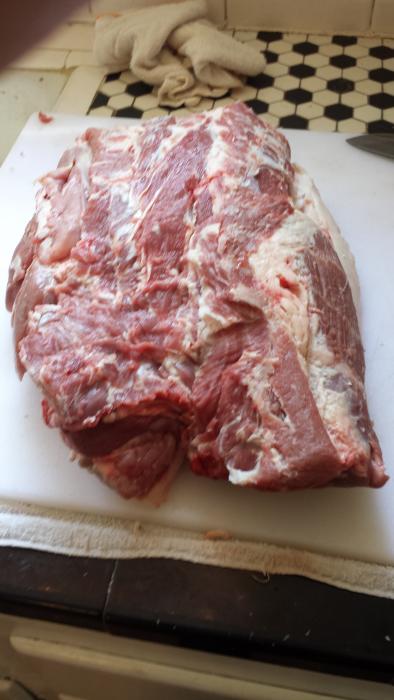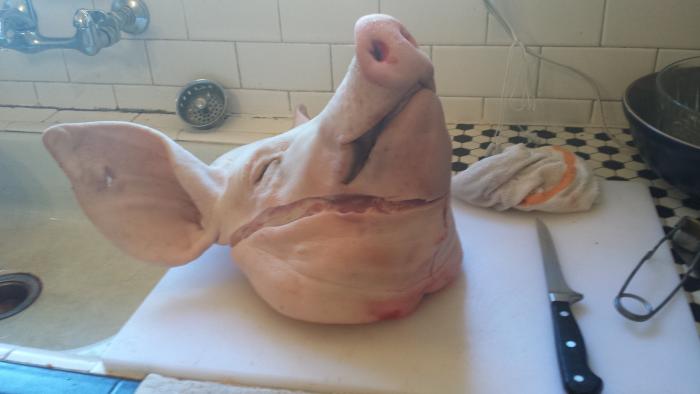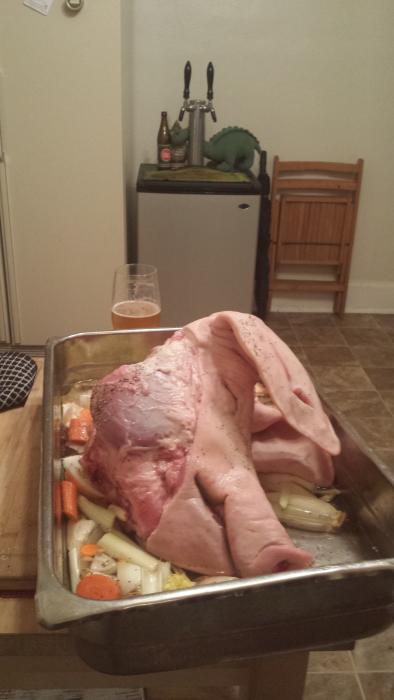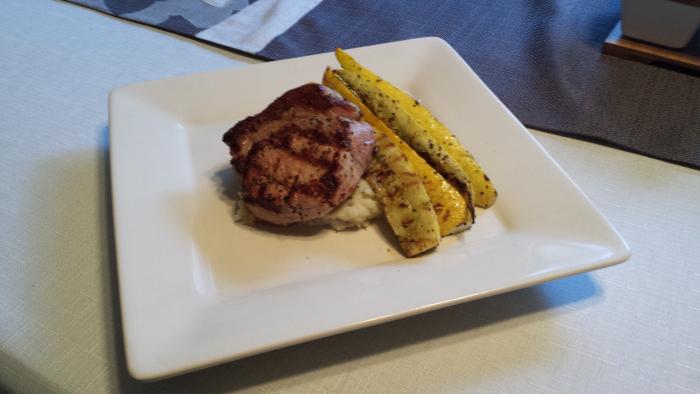vagabondat02
Well-Known Member
Hi everybody! I just "discovered" this section of the forum a couple of weeks ago and thought that you guys might find this interesting. In order to pay for grain, gizmos, and a basement to put them in, I've been a professional chef for about 12 years. For the last seven or so, I've been delving ever deeper into the rabbit hole of butchering and charcuterie, and realized that I needed to start getting whole pigs to facilitate some of the stranger projects that i wanted to do. Over the last three years, I've processed two dozen or so pigs at a couple of different restaurants, and a couple for friends, family, and myself. This is a personal pig that my SWMBO and I got from some local farmers that I've been friends with for a long time. Anyway, just as you wouldn't try to make an all grain, turbid mashed lambic as your first brew, this is also not a beginner project. If you've broken down a bunch of boston butts for sausage making however, you're probably a lot closer to being able to pull this off than you might think. If you are comfortable with removing bones and following muscle seams, identifying fatback vs. soft fat, connective tissue, and other undesirable material, it might be worth your time to think about a pig. I'll be at work a lot over the next couple of days, and I have a food and wine field event to cook for this Sunday, but I'll update as much as possible. So, without further ado, make a pot of coffee, and strap in for a long swiney ride. :rockin:


